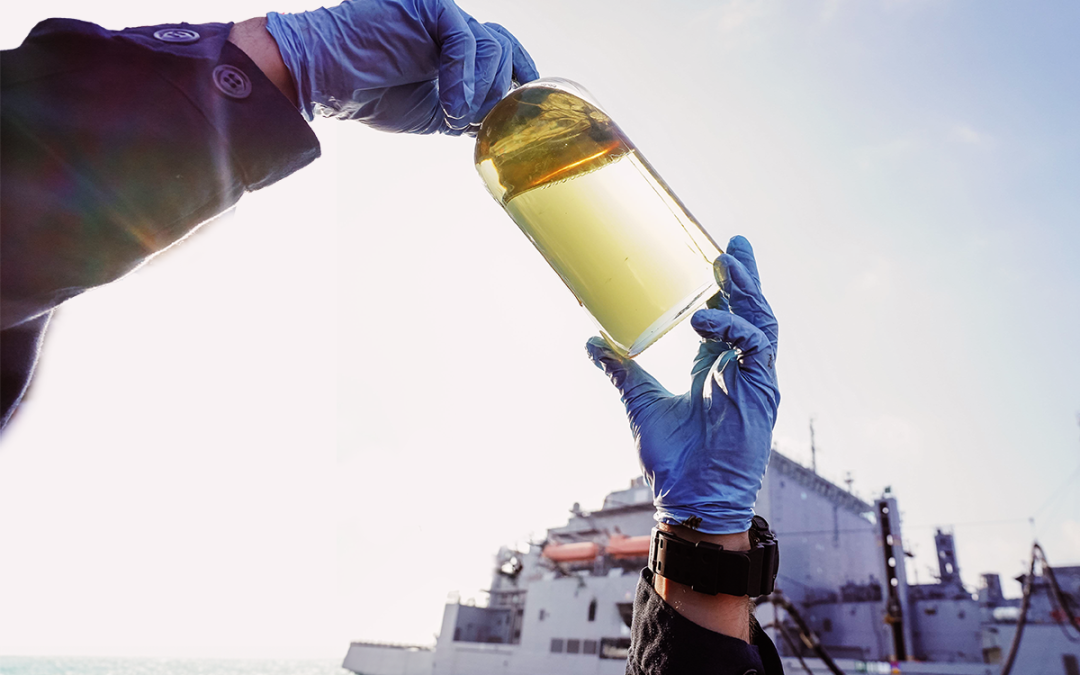Author: John Knox
We will look into the common additives and the purposes they serve. Additives typically make up about 0 .1 to 30 percent of the finished lubricating oil, depending upon the target application of the lubricant and have three basic roles:
- Enhance existing base oil properties with antioxidants, corrosion inhibitors, anti-foam agents and demulsifying agents.
- Suppress undesirable base oil properties with pour point depressants and viscosity index (VI) improvers.
- Impart new properties to base oils with extreme pressure (EP) additives, detergents, metal deactivators and tackiness agents.
There are many types of additives that can be broken into groups and sub-groups as follows:
Surface Protection
| Additive Type | Purpose | Typical Compounds | Functions |
| Anti-Wear Agent | Reduce friction and wear, and prevent scoring and seizure | Zinc dithiophosophates, organic phosphates and acid phosphates; organic sulphur and chlorine compounds; sulphurized fats, sulfides and disulfides. | Chemical reaction with the metal surface to form a film with lower shear strength than the metal, thereby preventing metal-to-metal contact |
| Corrosion & Rust Inhibitor | Prevent corrosion and rusting of metal parts in contact with lubricant | Zinc dithiophosphates, metal phenolates, basic metal sulfonates, fatty acids and amines | Preferential adsorption of polar constituent on metal surface to provide a protective film and/or neutralization of corrosive acids |
| Detergent | Keep surfaces free of deposits and neutralize corrosive acids | Metallo-organic compounds of barium, calcium and magnesium phenolates, phosphates and sulfonates | Chemical reaction with sludge and varnish precursors to neutralize them and keep them soluble |
| Dispersant | Keeps insoluble soot dispersed in the lubricant | Polymeric alkythiophosphates and alkylsuccinimides, organic complexes containing nitrogen compounds | Contaminants are bonded by polar attraction to dispersant molecules, prevented from agglomerating and kept in suspension due to solubility of dispersant |
| Friction Monitor | Alter coefficient of friction | Organic fatty acids and amines, lard oil, high molecular weight organic phosphorus and phosphoric acid esters | Preferential adsorption of surface-active materials |
Performance Improvement
| Additive Type | Purpose | Typical Compounds | Functions |
| Pour Point Depressant | Enable lubricant to flow at low temperatures | Alkylated naphthalene and phenolic polymers, polymethacrylates | Modify wax crystal formation to reduce interlocking |
| Seal Swell Agent | Swell elastomeric seals | Organic phosphates, aromatics, halogenated hydrocarbons | Chemical reaction with elastomer to cause slight swell |
| Viscosity Improver | Reduce the rate of viscosity change with temperature | Polymers and copolymers of methacrylates, butadiene olefins and alkylated styrenes | Polymers expand with increasing temperature to counteract oil thinning |
Lubricant Protection
| Additive Type | Purpose | Typical Compounds | Functions |
| Anti-Foaming | Prevent lubricant from forming a persistent foam | Silicone polymers and organic copolymers | Reduce surface tension to speed collapse of foam |
| Anti-Oxidant | Retard oxidative decomposition | Zinc dithiophosphates, hindered phenols, aromatic amines, sulphurized phenols | Decompose peroxides and terminate free-radical reactions |
| Metal Deactivator | Reduce catalytic effect of metals on oxidation rate | Organic complexes containing nitrogen or sulphur, amines, sulphides and phosphites | Form inactive film on metal surfaces by complexing with metallic ions |
You can see from these charts that compounds with Zinc, Phosphorous, Sulfur, Calcium, Barium, Magnesium and Silicon are all common additives that can be found in not only engine oils but all types of lubricants, each formulated to perform a specific function for a specific type of equipment.
By monitoring and trending the lubricant additives we can much more easily predict when action must be taken (oil change or sweetening) to prevent any damage being caused by a lubricant that is no longer able to perform the functions it was designed for.
It is important to note here that not all lubricants can be used in all applications; nor can they necessarily be mixed with other lubricants. The table below shows places where specific types of additives are used.
| Machine | Common Additives Used |
| Engines | Antioxidant, corrosion inhibitor, detergent/dispersant, anti-wear, anti-foam, alkalinity improver |
| Steam turbines, compressors | Antioxidant, corrosion inhibitor, demulsifier, anti-foam |
| Gears (spiral, bevel, or hypoid) | Anti-wear, antioxidant, anti-foam, sometimes corrosion inhibitor, extreme pressure |
| Gears (worm) | Extreme pressure, antioxidant, corrosion inhibitor, fatty acids |
| Hydraulic systems | Antioxidant, anti-wear, anti-foam, corrosion inhibitor, pour-point, depressant, viscosity index improver |
Some types of additives can be damaging when used in the wrong application. For instance, extreme pressure (EP) additives are chemically aggressive. They react chemically with metal surfaces to form a sacrificial surface film that prevents the welding and seizure of opposing asperities caused by metal-to-metal contact (adhesive wear). They are activated at high loads and by the high contact temperatures that are created. They are typically used in gear oils; but they can be corrosive toward yellow metals, especially at higher temperatures and should not be used in worm gear and similar applications where copper-based metals (Brass or Bronze) are used. Also, not all lubricants are compatible with all types of seals; so, using the wrong lubricant can cause a lot of work replacing seals that are failing.
